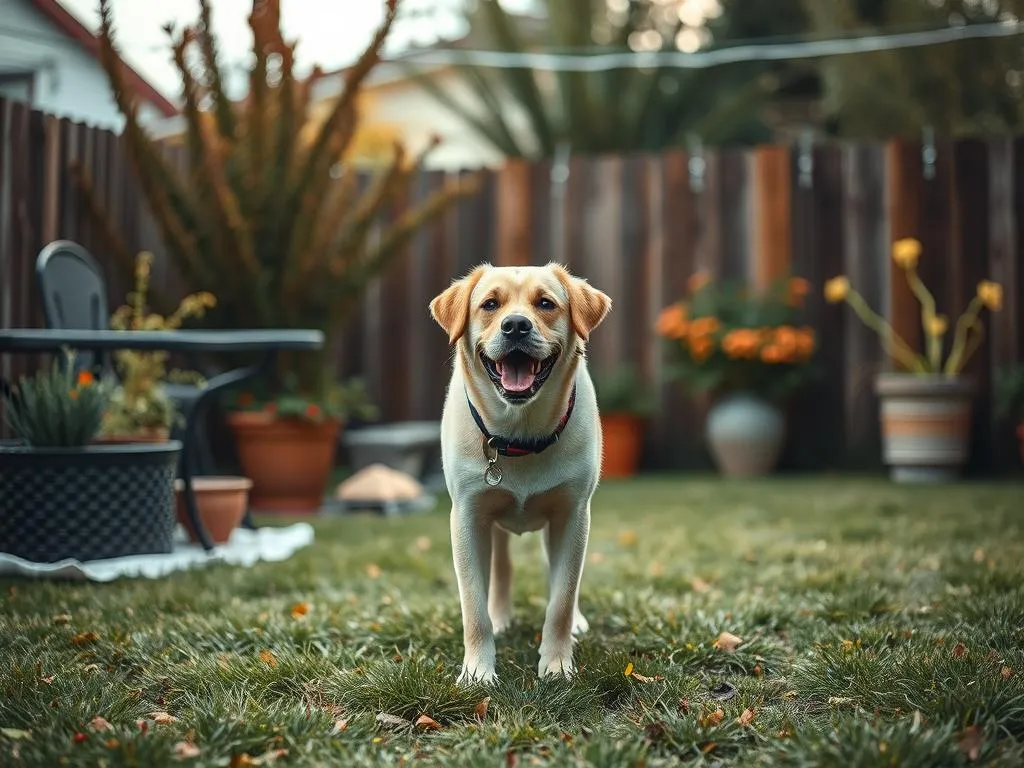
Owning a dog is a rewarding experience, but it also comes with a set of responsibilities that every pet owner must navigate. One of the most pressing questions many dog owners face is can you leave a dog in the backyard while at work? Understanding your dog’s needs and the implications of leaving them outdoors for extended periods can significantly impact their health and happiness.
This article will delve into your dog’s basic and emotional needs, assess the backyard environment, weigh the pros and cons of leaving a dog outside, explore alternatives, and consider the legal and ethical aspects of dog ownership.
Understanding Your Dog’s Needs
Basic Needs of Dogs
Dogs are not just pets; they are companions that require care and attention. Their needs can be categorized into three main areas:
- Physical Needs: Dogs need adequate food and fresh water daily, as well as regular exercise to maintain a healthy weight and prevent behavioral issues.
- Emotional Needs: Dogs are social animals that crave companionship and mental stimulation. Loneliness can lead to destructive behaviors or anxiety.
- Health Care Needs: Regular veterinary check-ups and vaccinations are crucial to prevent diseases and maintain overall health.
Dog Behavior and Psychology
Understanding canine behavior is essential for any dog owner. Dogs are pack animals that naturally seek companionship and interaction. If left alone for too long, dogs can experience loneliness, leading to stress and anxiety.
Signs of stress in dogs can include:
- Excessive barking or howling
- Destructive behavior (chewing furniture, digging)
- Changes in appetite or sleep patterns
Recognizing these signs early can help you address any issues before they escalate.
The Backyard Environment
Assessing Your Backyard for Dog Safety
Before deciding to leave your dog outside while you’re at work, it’s crucial to assess your backyard for safety. Consider the following:
- Fencing and Containment: Ensure your yard is securely fenced to prevent your dog from escaping. Check for any gaps or weak spots in the fence.
- Hazardous Plants and Materials: Some plants are toxic to dogs. Familiarize yourself with common poisonous plants and remove any hazardous materials like chemicals or sharp objects.
- Weather Considerations: Extreme weather can pose risks to your dog. Assess how your backyard provides shelter from heat, cold, and rain.
Providing Enrichment in the Backyard
A backyard can be a great space for dogs to play and explore, but it needs to be stimulating. Here are some ways to enhance your backyard environment:
- Interactive Toys and Games: Provide toys that challenge your dog mentally and physically, such as treat-dispensing toys or puzzle games.
- Safe Areas for Digging and Exploring: Designate a section of the yard where your dog can safely dig and explore.
- Shelter and Shade Options: Ensure your dog has access to shaded areas and shelter to protect them from the elements.
Pros and Cons of Leaving a Dog in the Backyard
Benefits of Backyard Time
Leaving your dog in the backyard may offer several benefits:
- Natural Exercise Opportunities: Dogs can run and play freely, promoting physical health.
- Fresh Air and Sunlight: Exposure to natural elements can improve mood and overall well-being.
- Reducing Bathroom Accidents: Having outdoor access can reduce the likelihood of indoor accidents.
Risks of Leaving a Dog Outside Alone
However, there are also significant risks associated with leaving a dog outside unsupervised:
- Potential for Escape or Injury: Dogs may dig under or jump over fences, leading to potential dangers outside the yard.
- Exposure to Extreme Weather: Dogs left outside can suffer from heatstroke or hypothermia, depending on the weather conditions.
- Increased Risk of Pest-Related Issues: Fleas, ticks, and other pests can pose health risks when dogs are left outside for extended periods.
Alternatives to Leaving a Dog in the Backyard
Doggy Daycare Options
Doggy daycare can be an excellent alternative for busy owners. Benefits include:
- Social Interaction: Dogs get to interact with other dogs, which satisfies their social needs.
- Structure and Supervision: Trained staff monitor the dogs, ensuring they are safe and engaged throughout the day.
Hiring a Dog Walker or Pet Sitter
If daycare isn’t feasible, consider hiring a dog walker or pet sitter. This option provides:
- Personalized Attention: Your dog gets one-on-one interaction, reducing feelings of loneliness.
- Regular Exercise: A dog walker can ensure your dog receives the necessary physical activity during the day.
Training a Dog for Independence
Training your dog to be independent can also be beneficial. Some methods include:
- Crate Training as a Safe Alternative: A crate can provide a secure space for your dog while you are away.
- Gradual Desensitization to Being Alone: Slowly increasing the time your dog spends alone can help them adjust to being by themselves.
Legal and Ethical Considerations
Local Laws and Regulations
Dog owners must be aware of local laws and regulations regarding outdoor confinement. This may include:
- Leash Laws: Many areas require dogs to be leashed when outside.
- Outdoor Confinement Regulations: Some regions have specific rules about how long dogs can be left outside alone.
Ethical Treatment of Dogs
Ethically, it’s crucial to consider your dog’s well-being. Long-term isolation can lead to severe behavioral and health problems. Responsible dog ownership involves making informed decisions that prioritize the mental and physical health of your dog.
Tips for Dog Owners
Preparing Your Dog for Time Outside
If you decide to let your dog spend time outside, consider these preparation tips:
- Gradual Acclimatization to Outdoor Time: Start with short periods outside and gradually increase the duration as your dog becomes more comfortable.
- Establishing a Routine: Dogs thrive on routine. Establish regular outdoor times to help your dog adjust.
Monitoring Your Dog’s Behavior
Keep a close eye on your dog’s behavior when they are outside alone. Here are some monitoring tips:
- Observe Your Dog’s Reaction: Watch for signs of stress or anxiety.
- Using Technology: Consider using cameras or GPS collars to monitor your dog’s activity and location throughout the day.
Emergency Preparedness
It’s essential to be prepared for emergencies. Here are steps to take:
- What to Do in Case of an Emergency: Have a plan in place for medical emergencies, including who to contact and where to go.
- Keeping Contact Numbers Handy: Maintain a list of veterinarians, pet services, and emergency contacts readily available.
Conclusion
Deciding whether you can leave a dog in the backyard while at work is a significant decision that requires careful consideration of your dog’s needs and the environment. While there are benefits to outdoor time, the risks cannot be overlooked.
Assessing your individual situation, including your dog’s temperament and the safety of your backyard, will guide you toward the best solution. Balancing outdoor time with overall health and well-being will ultimately lead to a happier and healthier life for your furry friend.
By understanding and addressing your dog’s needs, you can make informed choices that ensure their happiness and well-being, whether they are indoors or outdoors.









